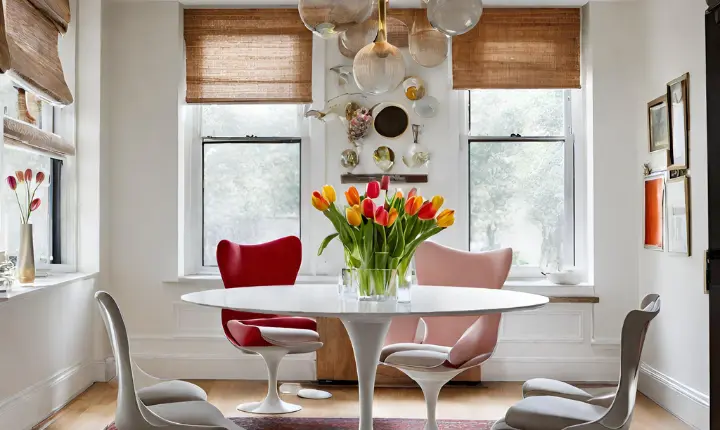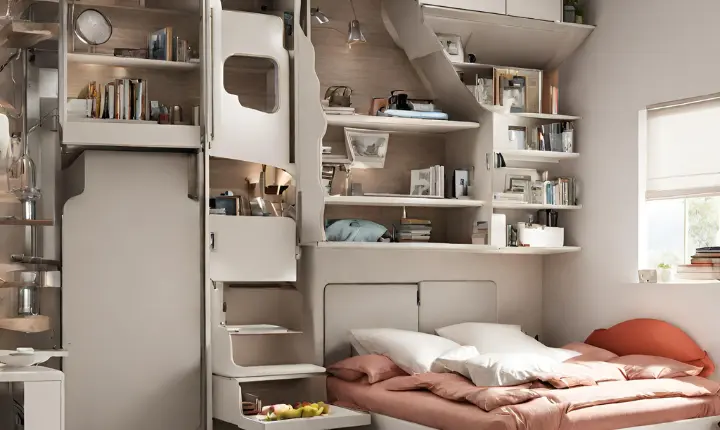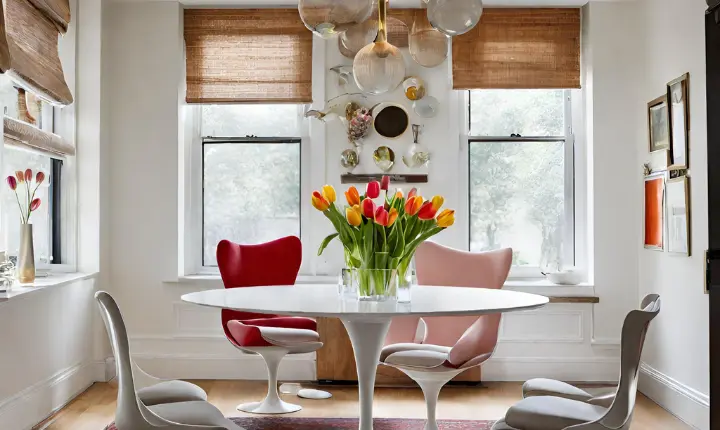
The choice of furniture plays a key role in shaping the ambiance of a dining room. Among the myriad options available, the Tulip Table has emerged as a timeless and versatile piece that seamlessly blends elegance with functionality. In this article, we’ll explore whether the Tulip Table is an appropriate choice for a dining room, considering its design, practicality, and overall aesthetic impact.
Design Aesthetics:

Designed by the iconic Finnish-American architect Eero Saarinen in the 1950s, the Tulip Table is renowned for its clean, minimalist lines and organic form. Its sleek, single pedestal base eliminates the need for traditional four-legged support, creating a sense of openness and visual lightness. This design aesthetic can be particularly beneficial in smaller dining spaces, as it imparts an illusion of spaciousness.
Space-Saving Features:

The Tulip Table’s compact design makes it an excellent choice for dining rooms with limited space. The absence of bulky legs allows for more flexible seating arrangements, making it easier to accommodate additional guests when needed. This practicality is especially advantageous for those who enjoy hosting dinner parties or gatherings, as the table’s streamlined silhouette facilitates efficient use of space.
Versatility in Material and Finish:
One of the remarkable aspects of the Tulip Table is its adaptability to various materials and finishes. The tabletop can be crafted from marble, laminate, or wood, allowing homeowners to tailor the table to their desired aesthetic. This versatility ensures that the Tulip Table can complement a range of interior styles, from modern and contemporary to eclectic and traditional.
Easy Maintenance:
Another aspect that enhances the Tulip Table’s suitability for dining rooms is its ease of maintenance. The absence of intricate details and crevices simplifies cleaning, making it a practical choice for households with busy lifestyles or young children. Whether it’s a quick wipe down after a meal or a more thorough cleaning routine, the Tulip Table proves to be a convenient and hygienic option.
FAQs
Q. What is a Tulip Table?
- A Tulip Table is a modern and iconic piece of furniture designed by Eero Saarinen in the 1950s. It is characterized by a single pedestal base that supports a round or oval tabletop, creating a sleek and minimalist look.
Q. Is the Tulip Table suitable for small dining rooms?
- Yes, the Tulip Table is an excellent choice for smaller dining spaces. Its compact design and absence of traditional legs give the illusion of more space, making it an ideal option for those with limited room.
Q. What materials are Tulip Tables made from?
- Tulip Tables are available in various materials for the tabletop, including marble, laminate, and wood. The choice of material allows homeowners to customize the table to match their preferred aesthetic and style.
Q. How many people can a Tulip Table typically seat?
- The seating capacity of a Tulip Table depends on its size. Smaller versions can comfortably seat four to six people, while larger models accommodate more. It’s important to consider the table’s dimensions when determining seating capacity.
Q. Are Tulip Tables easy to clean?
- Yes, Tulip Tables are generally easy to clean. The absence of intricate details and the streamlined design make them convenient for regular maintenance. Cleaning can be done with a simple wipe-down, and tabletop materials have different cleaning requirements.
Conclusion
The Tulip Table is a viable and stylish option for dining rooms, offering a harmonious blend of form and function. Its design versatility, space-saving features, easy maintenance, and iconic status make it a compelling choice for those looking to elevate their dining experience. Whether in a modern loft, a traditional home, or a compact urban apartment, the Tulip Table’s enduring charm continues to make it a relevant and attractive centerpiece for dining rooms around the world.
